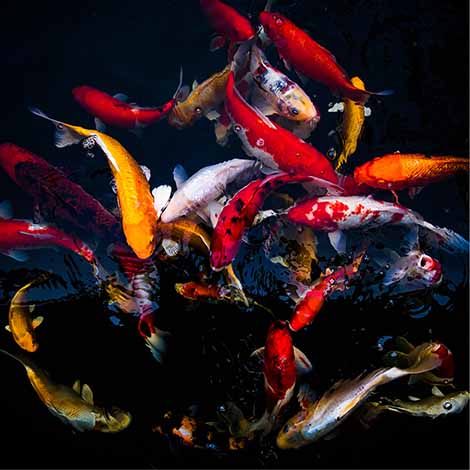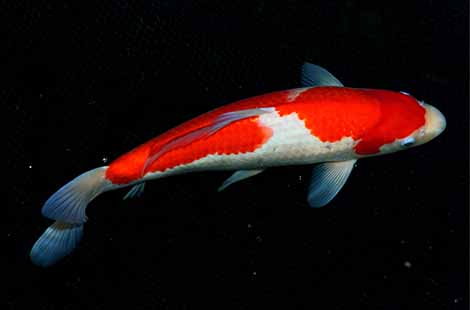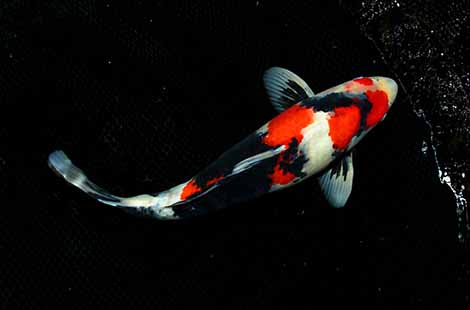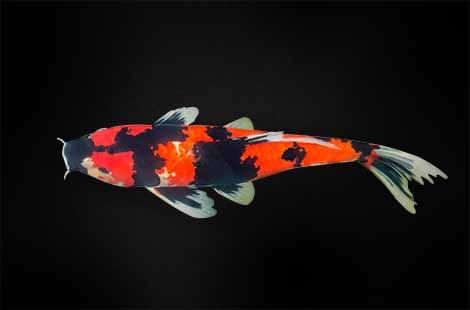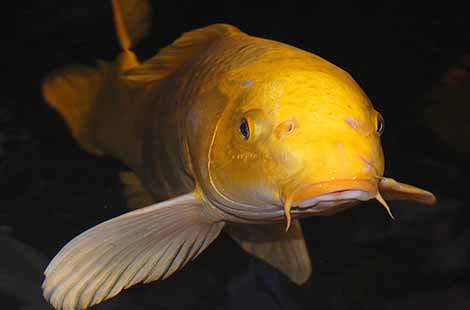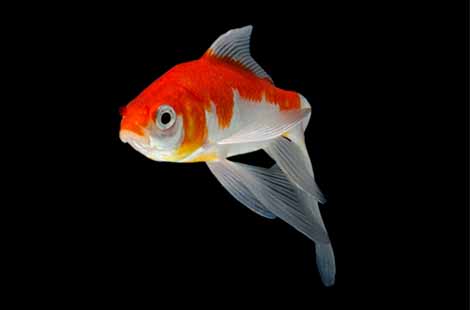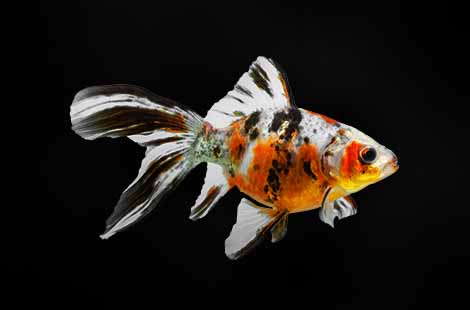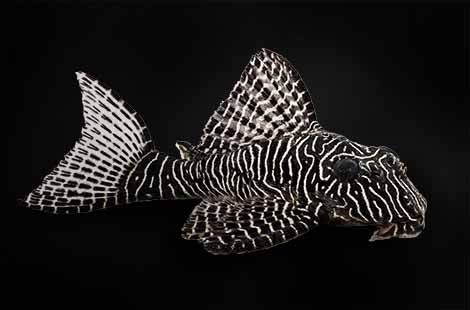If you inherited a stocked water garden, you probably wonder what types of fish you have swimming around. You should know what fish species are in your pond to care for them properly, especially when winter comes. Most decorative fish are members of the carp family, including koi and goldfish, and you can identify them by color, pattern, size, and behavior.
Koi
Did you know that koi varieties are named for their color patterns? Each unique koi type has distinct color combinations, scale patterns, and physical characteristics. Individual koi fish also have stunning color variations that can change over time, hence their nickname—Living Jewels.
Here are just a few of our favorites:
Kohaku
These are the most well-known variety of koi, recognizable by their solid white bodies with large red markings. A quality Kohaku displays bright, blemish-free white combined with deep, vibrant red patterns evenly distributed along the body.
Some common variations of Kohaku include:
- Tancho - Solid white body with only a single red dot on the top of the head.
- Doitsu - Either no scales or a single line of scales down the lateral body line.
- Gin Rin - Indicating sparkly scales most noticeable in younger fish that often fade with age.
- Maruten - A single red dot on the top of the head and colored markings elsewhere on the body.
Sanke (Taisho Sanke)
These koi also have solid white bodies with red markings like the Kohaku, with additional complementary black markings (Sumi). Sanke can have variations of black Tancho, Doitsu, Gin Rin, and Maruten coloring.
Showa (Showa Sanshoku)
These fish have solid black bodies topped with red and white (Shiroji) markings. The red, white, and black should be evenly balanced, with crisp, clean edges between each color. Showa can easily be confused with Sanke, so look for black markings on the head, which Sanke will not display.
Ogon
These fish stand out with their metallic-yellow (Yamabuki) or metallic-white (Platinum) scales. Clean, solid-colored heads and unblemished bodies are crucial to a high-quality Ogon. You can find these koi with Doitsu and Gin Rin Variations.
Goldfish
Koi are the exotic living jewels of the pond world, but you can also choose from a variety of fish suitable for your water garden at your local pet store. Koi and goldfish are both types of carp, which are hardy fish with similar habitat needs. This means koi and goldfish can live together happily in the same water garden.
Sarasa Comet
Colorful and active, these goldfish are distinguishable from their aquarium cousins by their deeply forked tail fins, which can grow up to two feet long! Sarasa Comets typically have red and white coloration with red appearing on the tail and dorsal fin. Their color pattern often resembles the Kohaku's, making it quite koi-like.
Shubunkin
Another type of goldfish, shubunkins sport opalescent red, white, grey, black, and blue scales in a calico pattern. According to fanciers, the bluer, the better! They have streamlined bodies with even, well-developed fins. Shubunkins, which hail from Japan, reach a length of 9 to 18 inches, adding a big splash of color to your pond.
Plecostomus
You can put your fish to work for you cleaning your water garden! Plecostomus are omnivorous bottom-feeder fish that eat string algae, leftover fish food, and other scraps. In large ponds, plecos sucker fish can reach over two feet long. Plecostomus are not as hardy in harsh winters as koi and some goldfish. Because they are tropical fish, you must overwinter them inside when water temperatures dip below 60° Fahrenheit.
Caring for Mixed Species Fishponds
A diverse water garden stocked with different species of fish requires attention and care. Your finned friends thrive in a balanced ecosystem catering to their needs. You can create the ideal environment for mixed ponds using pro tools from The Pond Guy, like the API Pond Starter Bundle complete with water tests, pond salt, and water conditioner.
Furthermore, filtration and proper aeration reduce the risk of stagnation, which could lead to the spread of pathogens that threaten your fish. Keep the water clean, clear, and oxygenated with an aeration system. The Pond Guy Aerator Kits are ideal for 1,000 – 6,000-gallon ponds, while CrystalClear KoiAir Water Garden Aeration Kits can support larger, 2,000 – 16,000-gallon ponds.
When feeding your water garden fish, you must deliver the right nutrition to help them stay healthy and active. While koi can eat goldfish flakes, they should receive specialty koi food to support their activity level and boost natural coloring. Add The Pond Guy Staple Fish Food to your feeding regimen for the best results.
Learn More About Water Garden Fish
Pond Fish Care
Identifying Male vs Female Koi
Shopping for Koi
Choosing Fish Food
Last Updated: February 27, 2024
